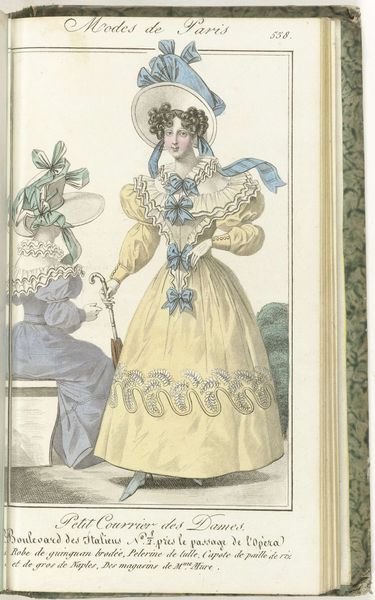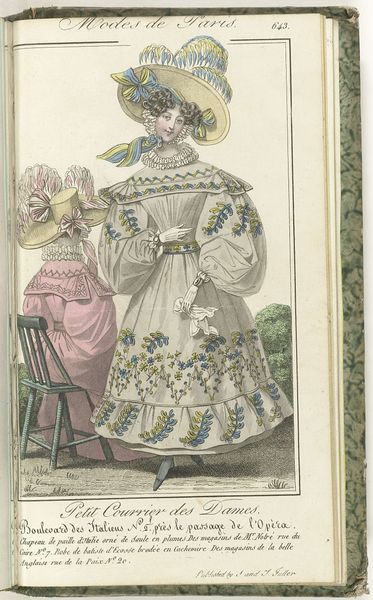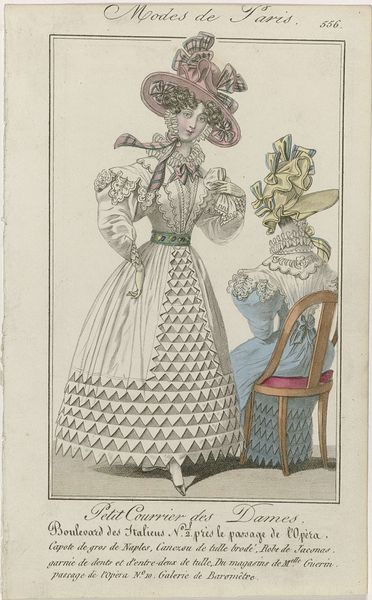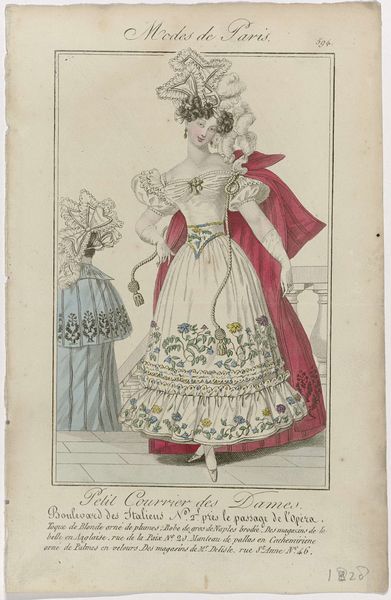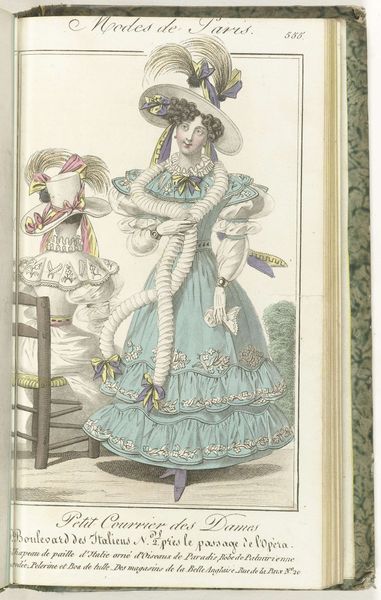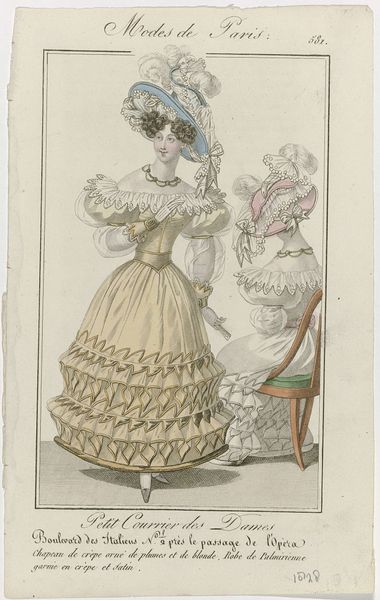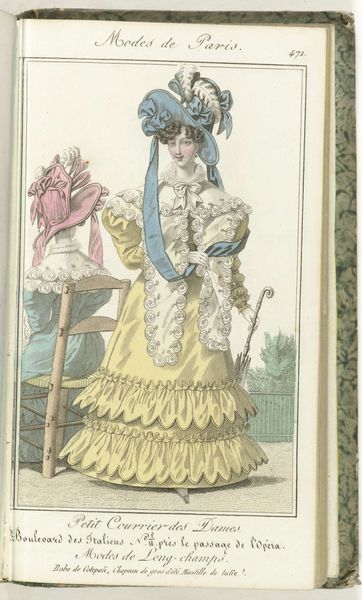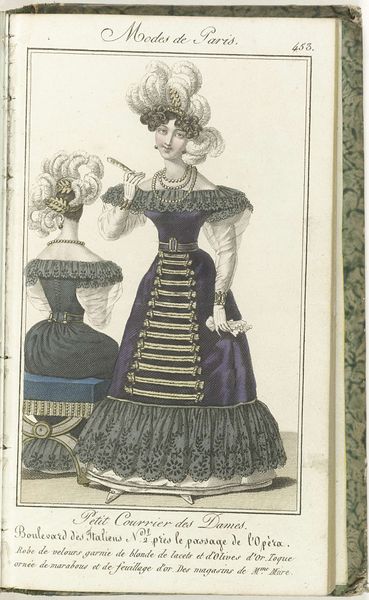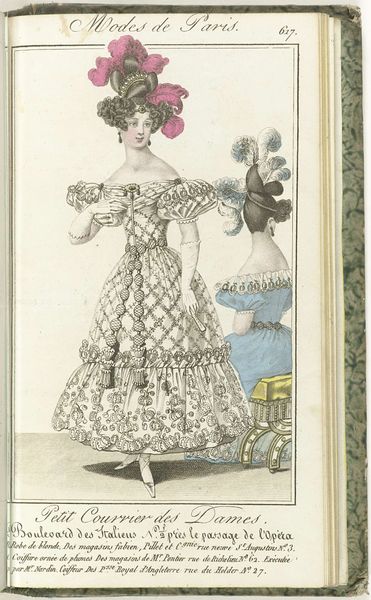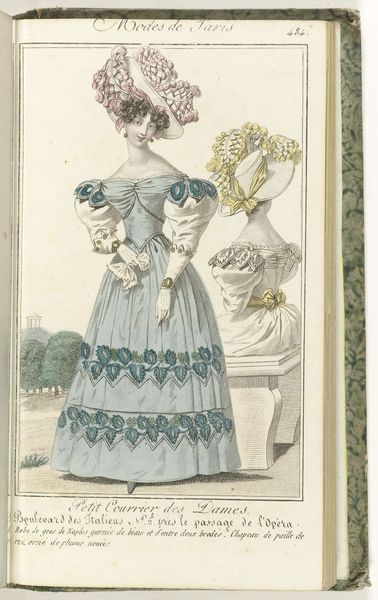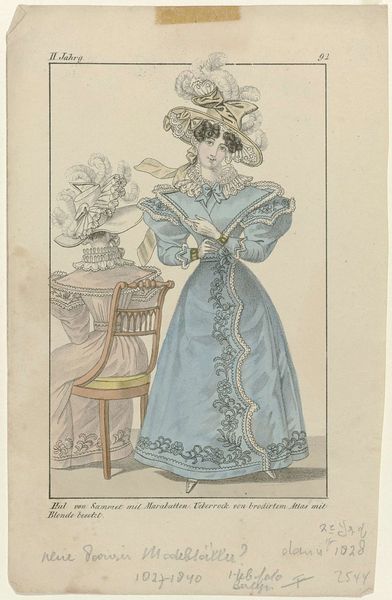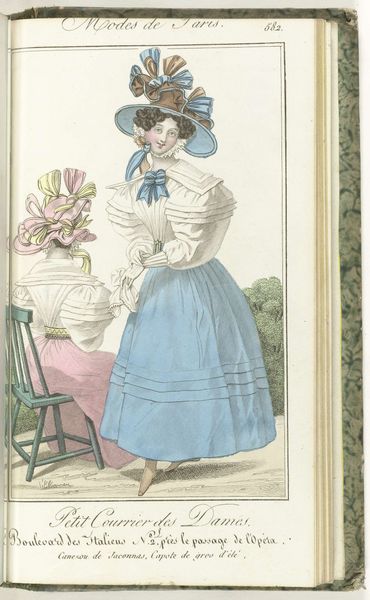
Petit Courrier des Dames, 20 mai 1829, No. 639 : Modes de Long-champs... 1829
0:00
0:00
drawing, paper, watercolor, ink
#
drawing
#
paper
#
watercolor
#
ink
#
romanticism
#
watercolour illustration
#
genre-painting
#
dress
Dimensions: height 201 mm, width 113 mm
Copyright: Rijks Museum: Open Domain
Curator: Let's take a look at this print titled *Petit Courrier des Dames, 20 mai 1829, No. 639 : Modes de Long-champs…*. It appears to be an illustration from 1829. The piece uses ink and watercolor on paper, currently held in the collection of the Rijksmuseum. Editor: My immediate impression is…delicate. There’s a softness to the colours, the way the watercolor washes across the paper. And so much detail— the lace, the embroidery. Curator: The print’s appearance coincides with the Romanticism movement and as such fits into a period when fashion plates served a crucial function, influencing not only the cut and fabric of clothing but also circulating aspirations around status and social identity, which served as early examples of commercial art in many respects. Editor: Definitely. And considering it’s for "ladies," one has to analyze this representation of gender. There’s this carefully constructed femininity on display, with those massive sleeves and delicate hats. One might argue whether it's representative of imposed norms or celebrating a powerful assertion of style in the 19th century. Curator: These images reinforced emerging social hierarchies. We can investigate the relationship between clothing, economics, and the way women maneuvered for agency in the late 1820s. Consider how the commercialisation of trends affected expectations within different classes, and whether publications actually fostered more creativity or instead homogenized dress among all who wanted to participate. Editor: This opens a very interesting field for discussing today’s "influencers," whose existence is tightly associated with commercial aesthetics. Even within supposedly individual creative spaces, we see the echo of the politics that existed 200 years ago! Curator: Precisely. Understanding these historic depictions offers vital clues for today's landscape. We should not interpret aesthetic illustrations such as these through modern sensibilities without understanding their socioeconomic and historical functions in European public life. Editor: The layers of analysis that emerge, even from seemingly simple images, speak to the significance of fashion in representing identity. It’s fascinating how visual codes remain!
Comments
No comments
Be the first to comment and join the conversation on the ultimate creative platform.
